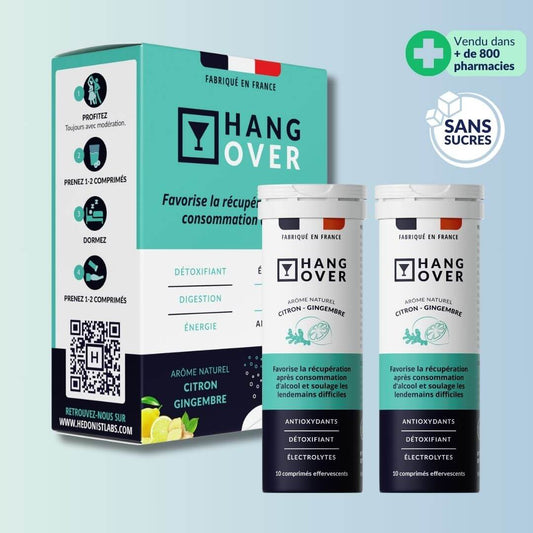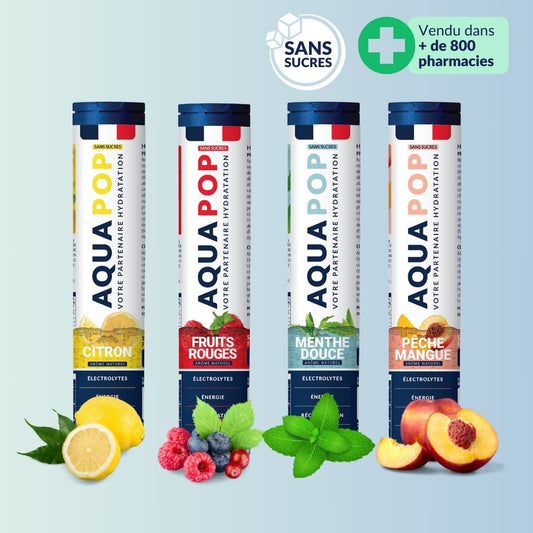What is hangover?
Acute alcohol intoxication, veisalgia or more commonly known as "the hangover ", defines those difficult after-parties.
With a variety of symptoms, this condition occurs in the hours following excessive alcohol consumption, during the elimination phase. It reflects the toxic effects of alcohol on the body, particularly the liver and brain.
This phenomenon can occur from a single glass onwards.
The most common symptoms are weakness, fatigue, difficulty concentrating, nausea, vomiting, stomach ache, gastric cramps, headaches, hypersensitivity to noise and light, intense thirst, reduced alertness and memory.
Initially, ethanol is absorbed in the small intestine. With the exception of bones and fats, it diffuses homogeneously into all tissues, following the movement of waterand crosses the feto-placental barrier. The main route of ethanol detoxification is via the liver.
It involves two saturable oxidation stages that operate at maximum capacity as soon as the blood alcohol level reaches 0.10 g/L :
Oxidation of ethanol to acetaldehyde by alcohol dehydrogenase, then acetaldehyde to acetic acid by acetaldehyde dehydrogenase.
Many factors are likely to modify the absorption and/or metabolism ofethanol:
Genetic or drug-related, for example. Analytical methods for detecting alcohol impregnation include breath or blood testing.
In the context of road safety, measurements are taken in exhaled air, with a legal threshold of 0.25 mg/L of exhaled air.
Alcohol poisoning occurs when the threshold of 0.5 g/l of blood is exceeded, i.e. around 20g of alcohol.
Lighter than water, its density of 0.79 makes it possible to calculate the quantity of ethanol contained in a beverage. The alcoholic strength or centesimal alcoholic strength is the volumetric percentage of pure ethanol in a liquid mixture.
A standard 10 cl glass of wine with an alcoholic strength of 12 contains 12 mL of pure ethanol, i.e. 12 × 0.8 (rounded up from 0.79) = 9.6 grams of alcohol.
Each glass or "alcoholic unit" therefore contains 10 grams of pure alcohol.
In the knowledge that the detoxification metabolism is saturable and operates at maximum capacity as soon as blood alcohol levels reach 0.10 g/L.



